JRD
At that time, there were very few companies in the States that specialized in good quality modern furniture. And while Knoll would continue to rely on a wide variety of designers, JRD always had just one, Jens. In this way Risom clearly established a niche for his new firm by focusing on the Risom name as the answer to America’s search for well-designed and well-crafted contemporary furniture. Although Knoll continued to produce Risom-designed furniture, they agreed to remove his name from their products in 1952 so that Jens would not be competing against himself with his new company’s designs.
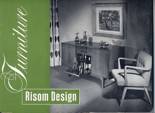
1950 JRD Catalog
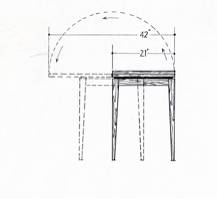
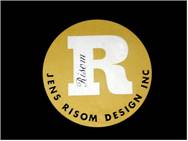
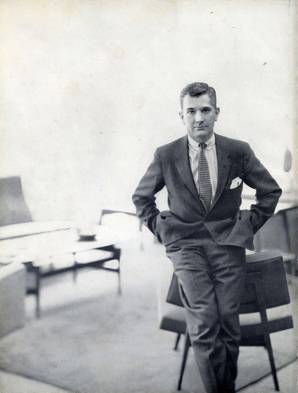
According to Risom, “In order for us or for anybody to establish a reputation for high quality, you have to fully control the entire process. Doing business that way we were fairly certain that we would always be known not only for design but also for good construction and detailing (the designer’s job), good manufacturing reflecting solid craftsmanship, and good follow up in sales and service. And we were willing to pay for that.”
In the early 1950s, Risom created a series of bold new advertisements with the tagline: The Answer is Risom. Featuring uncompromisingly direct photographs by Richard Avedon, Risom’s subtle new designs were shown in use against a white seamless background with no extraneous details. The response to Risom’s new furniture was tremendous, forcing JRD in 1954 to expand its manufacturing facilities to a large new site in Connecticut.
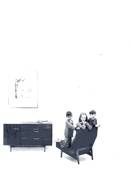
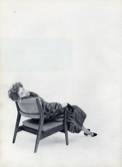
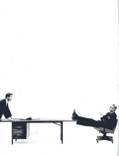
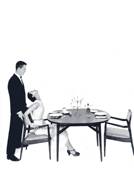
Late in the 1950s, JRD began to shift away from residential furniture to designing and producing non-residential furniture, focusing primarily on office management furniture but also producing hospital, and library furniture.
By the 1960s, JRD had showrooms in all the major U.S. markets as well as overseas where the company had licensed their designs with respected local manufacturers to reduce the high cost of exporting goods.
By 1970, after nearly 25 steadfast years of design and manufacturing control, Risom had begun exploring the idea of freeing himself from direct control over JRD’s manufacturing and production responsibilities so that he could spend more of his time designing, collaborating with architects, and watching over production from a higher level.
A short time later, the Dictaphone Corporation, an office machines company that traced its roots back to Alexander Graham Bell, presented their proposal to purchase JRD as a way to quickly add upscale executive office furniture to their respected office product line. Shortly after the purchase, the president of Dictaphone passed away. Unfamiliar with their new acquisition and the industry, the new management team changed direction once again and eliminated furniture from their line. A series of sales to poorly selected companies not familiar with either the furniture business or the values of good design eventually led to the sad and ultimate demise of JRD.
But even after 30 years, the spirit of JRD lives on. Each year JRD’s manufacturing employees and managers meet for a reunion and celebration of their glory years in furniture design, manufacturing, sales and service.
Design Control
By 1973, Jens was once again pursuing several new interests through his free-lance design service, Design Control, located in New Canaan, Connecticut, where he currently resides with his wife, Henny.
New clients have included the Howe Furniture Company, Do-More, Gaylord (library furniture) and many others for whom Risom has developed designs quite different from his work at JRD but incorporating the same high standards for clients who were eager to upgrade their product lines – in furniture, interiors and buildings.
Recently, (March, 2005) Ralph Pucci International introduced a new line of Risom-designed furniture – some totally new and others inspired by older designs, including a sofa, a slipper chair, dining tables, side tables and a classic Risom armchair.
Awards and Achievements
- Risom has received a variety of architecture and design awards both here and in Europe. His chairs are in the permanent collections of the Museum of Modern Art in New York, the Yale Museum of Art & Design, the Brooklyn Museum, the R.I.S.D. Museum in Providence, Rhode Island, and the Cooper-Hewitt, National Design Museum, Smithsonian Institution in New York City.
- In 1970 Risom was appointed as a trustee of the Rhode Island School of Design (RISD) and is still active on the Board. During their 120th Commencement Ceremonies on June 7, 2003, RISD conferred an Honorary Doctorate of Fine Arts degree on Risom, noting he was “one of the most influential furniture designers of the 20th century.”
- In November 1994 Risom became the third recipient of the Brooklyn Museum/Modernism Design Award for Lifetime Achievement. The Museum’s permanent collection contains designs by Risom as well as by Ettore Sottass, Frank Gehry and Eero Saarinen, among others.
- In 1996, Queen Margrethe of Denmark knighted Risom with the prestigious Danish Knight’s Cross.
Having designed the first chair for Knoll in 1941, Risom was honored by the company in 1997 when Knoll reissued a collection of Risom-designed side and lounge chairs, stools and tables that remain today a successful part of the Knoll Studio line. http://www.knoll.com/designer/designer_detail.jsp?designer_id=97
- In 2004, Risom was honored with the annual Russel Wright Award, presented to today’s leaders who carry forward one or more dimensions of Wright’s legacy in design. www.russelwrightcenter.org/risom.html
In March, 2005 Ralph Pucci International introduced a new line of Risom-designed furniture – some totally new and others inspired by older designs, including a sofa, a slipper chair, dining tables, side tables and a classic Risom armchair. http://www.ralph-pucci.com
JR Philosophy
Risom once summed up his philosophy this way:
"Good design means that anything good will go well with other equally good things – contemporary or traditional."
“Furniture is not sculpture, nor is a particular design created only for visual appearance. Furniture clearly satisfy all requirements: It should be used, enjoyed and respected.”
If the Answer Is Risom, what are the questions?
The three most-frequently asked questions of Jens:
- Is furniture Functional or Decorative?
- What does Contemporary really mean?
- What is Good Design?
Risom’s Answers:
- Furniture is primarily functional. A chair has to be comfortable and support one’s body although Frank Lloyd Wright once told me that he did not agree with this because, as he said, “God did not intend for man to be seated!” Furniture should also look attractive and express the designer’s ideas and taste.
- Contemporary means that the design is created in our time for today’s people, environments, habits and activities. Antique styles we all admire now were also once contemporary and undoubtedly were questioned when new just as ours are today.
Many of my designs from 60 years ago are now categorized as Mid-Twentieth Century, which of course makes me feel rather old! People ask me if I think these designs will still be around in another 50 years. Well, I won’t be around then so I’m too concerned about that!
- Design is Problem Solving. Good design therefore is a good solution that satisfies many requirements. While furniture must be attractive in appearance, the detailing, materials, execution and craftsmanship that go into the overall design must also be of a very high standard, whether the product is mass-produced or made by hand.
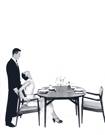
While the names Chippendale or Hepplewhite suggest a chair, and – to get away from the Eighteenth Century – the same applies today to Breuer, Eames, Risom, and many others.
George Nelson, adapted from his 1953 book, Chairs.












